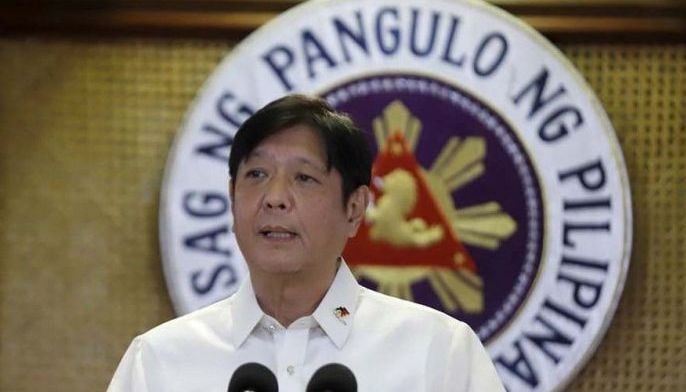MANILA, Philippines — President Ferdinand Marcos Jr. has set more ambitious economic goals compared to the ones laid out by his predecessor, which include targets to slash the poverty rate to single-digit level and achieving upper middle-income status by the end of his term.
At a noontime press briefing in Malacañang on Wednesday, Benjamin Diokno, who Marcos plucked from the central bank to lead the Department of Finance, said that the current administration wants to achieve a gross domestic product of 6.5-7.5% this year. This, however, was lower than 7-8% set in the last meeting of economic managers of ex-President Rodrigo Duterte.
READ: Marcos administration likely to temper growth targets as inflation bites
But from 2023 till the end of Marcos' term in 2028, Diokno said the government hopes that annual growth would hit between 6.5-8%, higher than Duterte’s goal of 6-7% growth.
In a Viber message, Diokno confirmed that the figures he cited at the Palace press conference were those that have been approved by the inter-agency Development and Budget Coordination Committee (DBCC), which will meet on Friday to present the new administration’s economic targets and assumptions that would guide policymakers.
Here are the Marcos administration’s economic targets that, Finance Secretary Ben Diokno said, are “more ambitious” than the Duterte government’s goals. pic.twitter.com/9BeZxRnExU
— Ian Nicolas Cigaral (@ipcigaral) July 6, 2022
"We're ambitious, especially since many reforms will be passed then," Diokno told reporters.
At the same time, the Marcos administration wants to reduce the poverty rate to 9% by 2028. The previous government targeted to slash the poverty rate to 14% by 2022, but the gains in the past years had been erased by the pandemic.
READ: Pandemic throws more Filipinos into poverty in first half — PSA
With hopes of pulling more Filipinos out of poverty, Diokno said Marcos wants the Philippines to achieve upper-middle income status by 2028, which meant that the government will be "shooting" $4,046 per-capita income for Filipinos by the end of his term.
Deficit, debt
Diokno said the national government is looking to slash the fiscal deficit to 3% of gross domestic product starting 2026. But this does not mean that the new administration would limit spending on infrastructure, which is pegged at 5-6% of GDP annually between 2023 and 2028.
“As you know during the last 50 years before Duterte, spending on infra was less than 2%," Diokno said.
Likewise, Diokno said government debt will be scaled down to 60% of GDP by 2025. Currently, the debt load, as a share of the economy, is hovering above the 60% threshold that economists and credit watchers deemed manageable for emerging economies.
But for Domini Velasquez, chief economist of China Banking Corp., achieving a higher GDP growth would be difficult next year as the so-called “low base effects” fade and amid rising borrowing costs.
"2023's GDP growth will not benefit from base effects and the momentum from a newly opened economy (that we are enjoying this year) will not be there anymore. There will also be more external headwinds next year as advanced economies growth rates are projected to slowdown, with some possibly going into recessions," Velasquez said.
Separately, Leonardo Lanzona, economist at Ateneo De Manila University, believes infrastructure spending must go with higher investments in human capital to make economic growth more inclusive.
“To be inclusive, a more workable program is to focus on the marginalized sector of our society and to work out the plan from there to empower them. The idea is to reduce inequality which in turn will spur greater activity to attain long-run growth. In this case, the overall task is achieving more human capital, with infrastructure and debt taking on a less prominent role,” Lanzona said.
“Unless we see the actual programs, these targets are absolutely worthless,” he added.


